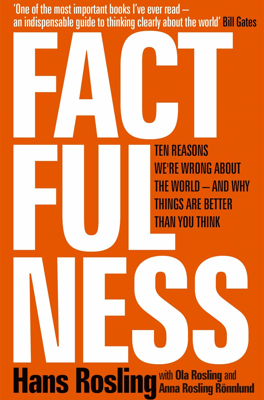The Gap Instinct
In October 1995, Hans Rosling utilized his class to confront global misconceptions by comparing children mortality rates and societal progress in different countries, contrasting reality with common perceptions. His exercise revealed that many people implicitly compared the world's states by dramatizing them into binary opposite categories: rich vs. poor, or developed vs. developing. Rosling labels this as the "gap instinct" - our tendency to view the world in divided, often simplistic terms. This chapter discusses how such misconceptions arise and are sustained, and why they are problematic.
Misconception Examples and Theories
- Saudi Arabia and Malaysia: Rosling indicated that Saudi Arabia reduced its child mortality from 242 per thousand in 1960 to 35, while Malaysia moved from 93 to 14. Most students believed these countries hadn’t progressed that much, reflecting a common narrative of static underdevelopment in non-western countries.
- Misunderstanding Economic and Social Changes: The gap instinct often leads to the oversimplification of global conditions, categorizing countries into misleading baskets of 'developed' and 'developing' which don't accurately represent the real, ongoing improvements in global living standards.
Teaching and Revealing True States
Using data from tables and graphs, Rosling showcased to the students and later in public speeches, how most countries are actually placing towards betterment. This was visually evidenced through the Child Mortality Rates and the Socio-Economic transformation data over the decades. This contradicts the general polarized view of the world in two distinct segments.
Breaking Down the Instincts and Myths
- The reality of the Data: Child mortality and social improvements data from countries like Brazil, Tanzania, and others typically surprise people because these don't match with commonly held narrative frameworks.
- Introduction of Levels of Economic Capability: Rosling introduces a new four-level economic model, which more realistically represents the global population's spread across various levels of economic conditions from extreme poverty to high income, suggesting most of the world's population is actually in the middle, not at the polar ends of the economic spectrum.
Opportunity for Corrective Perception
Through guided discussions, visual data presentations, and critical questioning, Rosling attempts to recalibrate the understanding of global development, urging a move beyond the dichotomy of rich versus poor. Using tools like the updated income levels and data visualizations, Rosling addresses misconceptions by replacing them with a framework that better mirrors reality.
Key Factors in Combatting Misconceptions
- Introducing 'Majority Thinking': Instead of focusing on distinctions like the West vs. the rest, Rosling suggests concentrating on the living standards of the global majority.
- Use of Accurate, Current Data: Continuously updating and using reliable data sources help in presenting a more factual picture.
- Highlighting Overlapping Characteristics: Often, separating groups (like income levels or geographic locations) leads to ignoring the similarities or overlaps that exist among them—knowledge of these nuances is vital.
Through his initiatives and teachings, Rosurren underscores the importance of dismantling preconceived notions and promotes a more nuanced understanding of the world. Factfulness, as Rosling calls it, is about recognizing and correcting the gap instinct by applying thoughtful analysis and relying on factual data rather than dramatic simplifications.
